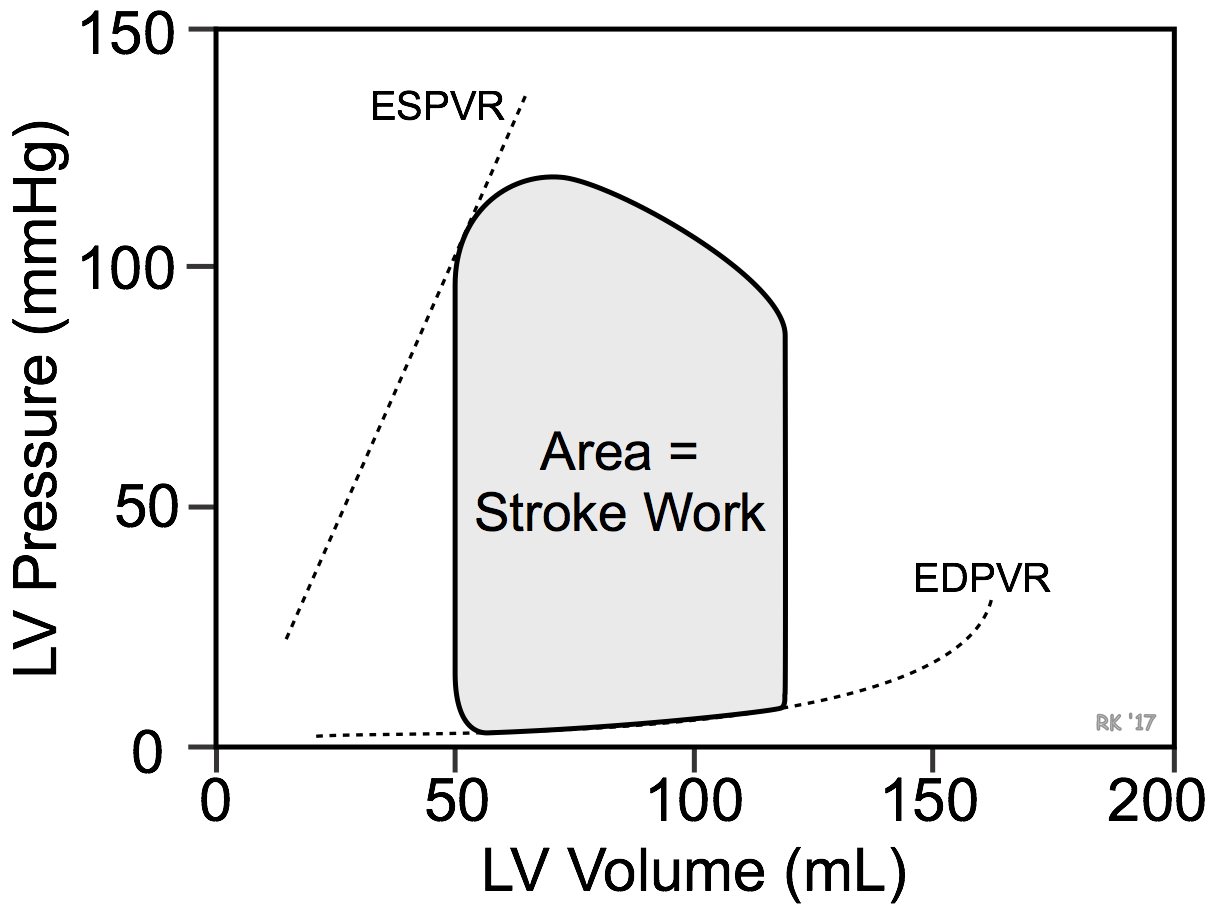Stroke Work and Cardiac Work
In physics, work is the product of force times distance. Therefore, considering a solid object of a particular mass, the work done to move the object is the force applied to the object times the distance that the object moves. When work is done to move a volume of fluid, work is defined as the product of the volume of fluid and the pressure required to move the fluid.
Stroke work (SW) refers to the work done by the ventricle to eject a volume of blood (i.e., stroke volume). The force that is applied to the volume of blood is the intraventricular pressure. Therefore, ventricular stroke work can be estimated as the product of stroke volume and mean intraventricular pressure during systolic ejection. In a normal heart, this is approximated by the mean aortic pressure during ejection. When aortic pressure instead of intraventricular pressure is used, it is assumed that kinetic energy is negligible, which is usually true at resting cardiac outputs. Occasionally, this is simplified to stroke volume (SV) times mean arterial pressure (MAP), although this will further underestimate the stroke work.

Stroke work is best illustrated by ventricular pressure-volume diagrams, in which stroke work is the area within the pressure-volume loop. This area represents the external work done by the ventricle to eject blood into the aorta.
 Stroke work is sometimes used to assess ventricular function. If stroke work is plotted against ventricular preload, the resulting ventricular function curve will appear qualitatively similar to a Frank-Starling curve. Like the Frank-Starling relationship, there will be a family of curves depending upon the inotropic state of the ventricle.
Stroke work is sometimes used to assess ventricular function. If stroke work is plotted against ventricular preload, the resulting ventricular function curve will appear qualitatively similar to a Frank-Starling curve. Like the Frank-Starling relationship, there will be a family of curves depending upon the inotropic state of the ventricle.
Cardiac work (also called cardiac minute work or ventricular minute work) is the product of stroke work and heart rate, which is the equivalent of the triple product of stroke volume, aortic pressure, and heart rate. Because this is the rate of doing work (work per unit time), it represents the power of the ventricle.
Revised 11/04/2023

 Cardiovascular Physiology Concepts, 3rd edition textbook, Published by Wolters Kluwer (2021)
Cardiovascular Physiology Concepts, 3rd edition textbook, Published by Wolters Kluwer (2021) Normal and Abnormal Blood Pressure, published by Richard E. Klabunde (2013)
Normal and Abnormal Blood Pressure, published by Richard E. Klabunde (2013)